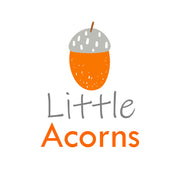
30 Days Wild Blog - Day 5: Build a bug mansion
An average garden accommodates more than 2,000 different species of insect! Very few of these creatures cause significant damage to our prized plants, and there are many more insects that actually help us to control the ones that do! By providing the right habitats, we can greatly increase the number of ‘beneficial’ insects in the garden.
One way to increase the comfort of your patch for insects is to build them a bug mansion.
You will need:
- Wooden pallets
- Dead wood
- Stones and tiles
Where to build your bug mansion:
Some invertebrates like cool, damp conditions, while others prefer the sun. To cater for as many of them as possible, site the mansion where some of it will catch the sun, but the rest will be in the shade under a tree or near a hedge, for example. Choose a level, even surface to build it on – the mansion may end up fairly heavy, so it will need a firm base.
Why not plant some nectar-rich flowers in and around your bug mansion to provide food for butterflies and bees?
Building your bug mansion:
The basic framework is made of wooden pallets. Try to use recycled or reclaimed materials where you can. The mansion does not need to be more than five pallets high. If you place the bottom pallet upside down, this should create larger openings at the ends, which can be also be used for a hedgehog house. Although the structure should be stable, you might want to secure each pallet to the one below.
Filling the gaps in your bug mansion:
- Dead wood. Dead wood is an increasingly rare habitat and is essential for the larvae of wood-boring beetles. It also supports many fungi, which help to break down the woody material. Crevices under the bark hold centipedes and woodlice.
- Hollow stems. Hollow stems, such as old bamboo canes, or holes drilled into blocks of wood, make good nesting sites for solitary bees.
- Stones and tiles. Amphibians need a frost-free place to spend the winter. Provide stones and tiles in the centre of your habitat to give amphibians the cool, damp conditions they need.
- Straw and hay. These provide many opportunities for invertebrates to burrow in and find safe hibernation sites.
- Dry Leaves. Dry leaves offer homes for a variety of invertebrates by mimicking the litter on the forest floor.
- Loose bark. Beetles, centipedes, spiders and woodlice all lurk beneath decaying wood and bark.
- Corrugated cardboard. Roll up a piece of corrugated cardboard and put it in a waterproof cylinder to create a home for lacewings.
- Dry sticks. Dry sticks are perfect for ladybirds to hibernate in.
- Nectar-producing plants. Plant some nectar-rich flowers in and around your new bug mansion to provide food for butterflies and bees.

